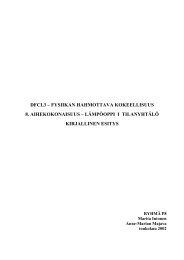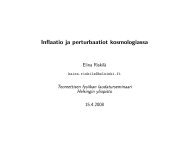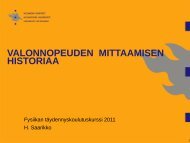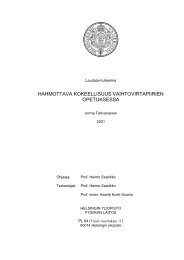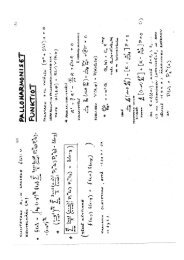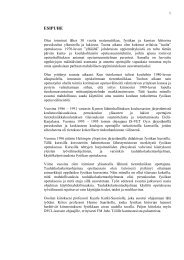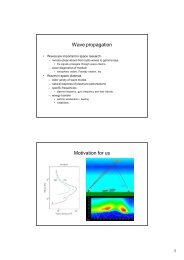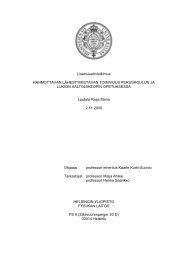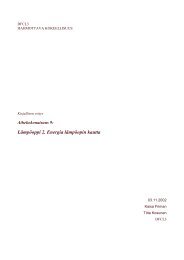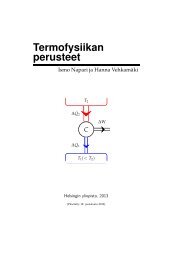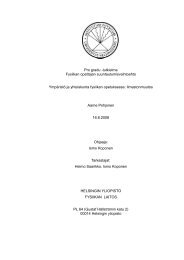Cosmological Perturbation Theory, 26.4.2011 version
Cosmological Perturbation Theory, 26.4.2011 version
Cosmological Perturbation Theory, 26.4.2011 version
You also want an ePaper? Increase the reach of your titles
YUMPU automatically turns print PDFs into web optimized ePapers that Google loves.
9 PERTURBATION IN THE ENERGY TENSOR 219.1 Separation into Scalar, Vector, and Tensor PartsThe energy tensor perturbation δT µ ν is built out of the scalar perturbations δρ, δp, the 3-vector⃗v = v i and the traceless 3-tensor Π ij . Just like for the metric perturbations, we can extract ascalar perturbation out of ⃗v:and a scalar + a vector perturbation out of Π ij :wherev i = v S i + v V i , where v S i = −v ,iand ∇ · ⃗v V = 0. (9.20)Π S ijΠ ij = Π S ij + Π V ij + Π T ij , (9.21)= ( ∂ i ∂ j − 1 3 δ ij∇ 2) ΠΠ V ij = − 1 2 (Π i,j + Π j,i ) and (9.22)δ ik Π T ij,k = 0. (9.23)We see that perfect fluid perturbations (Π ij = 0) do not have a tensor perturbation component.For Fourier components of v i and Π ij we use the same (Liddle&Lyth) convention as for B iand E ij (see Sec. (6)).In the early universe, we have anisotropic pressure from the cosmic neutrino backgroundduring and after neutrino decoupling, and from the cosmic microwave background during andafter photon decoupling. <strong>Perturbation</strong>s in the metric will make the momentum distribution ofnoninteracting particles anisotropic (this is anisotropic pressure). If there are sufficient interactionsamong the particles, these will isotropize the momentum distribution. Decoupling meansthat the interactions become too weak for this. If we aim for high precision in our calculations,we need to take this anisotropic pressure into account. For a more approximate treatment, theperfect fluid approximation can be made, which simplifies the calculations significantly.9.2 Gauge Transformation of the Energy Tensor <strong>Perturbation</strong>s9.2.1 General RuleUsing the gauge transformation rules from Sect. 4 we have˜δT 0 0 = − ˜δρ = δT 0 0 − ¯T 0 0,0 ξ0 = −δρ + ¯ρ ′ ξ 0˜δT i 0 = −(¯ρ + ¯p)ṽ i = δT i 0 + ξi ,0 ( ¯T 0 0 − 1 3 ¯T k k )= −(¯ρ + ¯p)v i − ξ i ,0(¯ρ + ¯p)1 ˜δT k 3 k = ˜δp = 1 3 (δT k k − ¯T k,0 k ξ0 ) = δp − ¯p ′ ξ 0˜δT i j − 1 3 δi j ˜δT k k = ¯p˜Π ij = δT i j − 1 3 δi j δT k k = ¯pΠ ij (9.24)and we get the gauge transformation laws for the different parts of the energy tensor perturbation:˜δρ = δρ − ¯ρ ′ ξ 0 (9.25)˜δp = δp − ¯p ′ ξ 0 (9.26)ṽ i = v i + ξ,0 i (9.27)˜Π ij = Π ij . (9.28)



